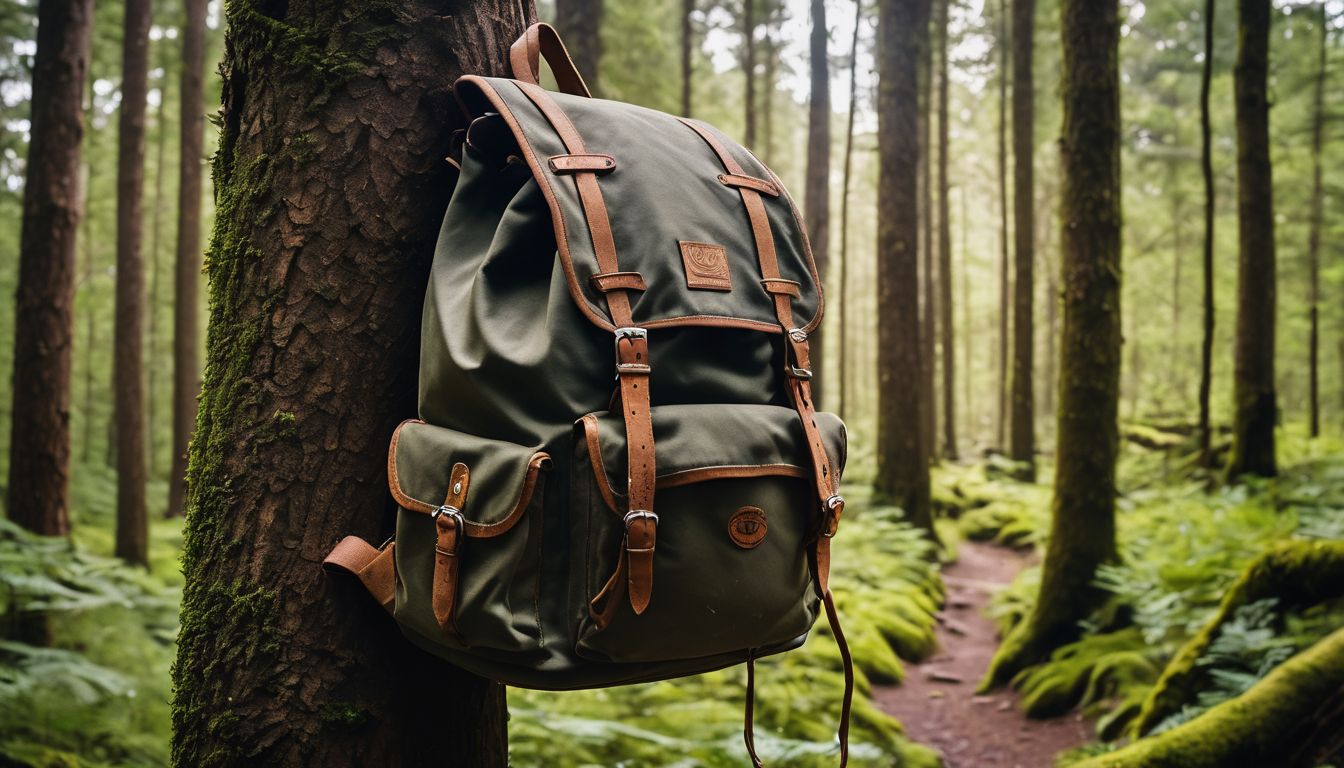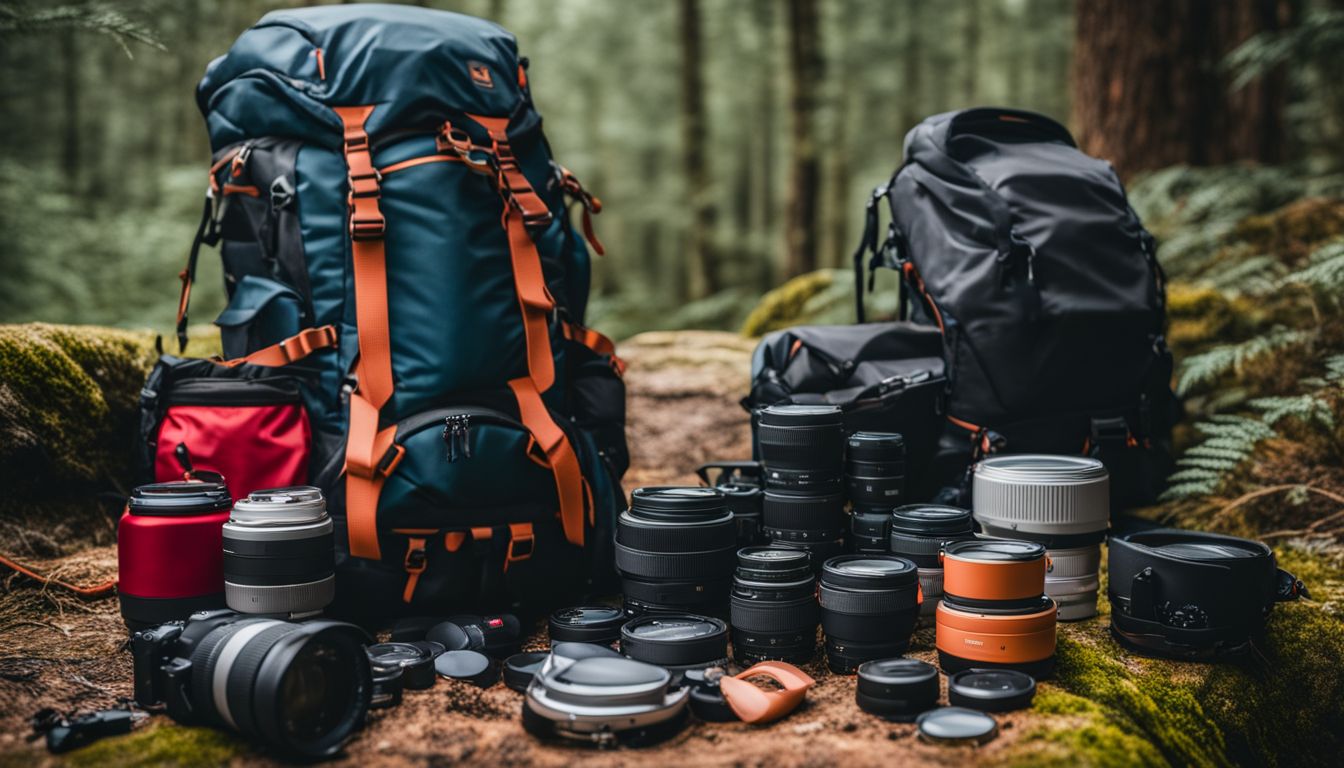
Caring for your rucksack is like nurturing a trusted travel companion—it extends the journey and enriches the experience. With years spent traversing trails and navigating city streets, I’ve gleaned invaluable lessons on keeping these essential carriers in prime condition, ensuring they withstand the rigors of adventure.
Trust me, a well-maintained rucksack doesn’t just age gracefully; it becomes a testament to your explorations.
Understanding that regular maintenance can prevent minor issues from escalating into irreparable damage underscores the importance of our topic today. This article will equip you with fundamental knowledge and practical tips to cherish and preserve your gear’s integrity.
Get ready to dive into the world of rucksack upkeep! Keep reading; smart care starts here.
Key Takeaways
- Regular maintenance of your rucksack is crucial to prevent damage and ensure its longevity, such as cleaning dirt from zippers to prevent breakage.
- Proper drying techniques after washing are essential to prevent mold growth and maintain the quality of the backpack. Hanging upside down with open zippers promotes airflow and prevents mildew growth.
- Maintaining straps and zippers by inspecting for wear, using a mild soap solution for cleaning straps, and wiping zippers with a soft brush helps preserve their functionality.
Importance of Regular Rucksack Maintenance

Keeping your rucksack in great shape matters a lot. A well-cared-for backpack won’t fall apart when you need it most. Little fixes can stop big problems later on. For example, cleaning dirt from zippers keeps them working smoothly and stops them from breaking when you’re pulling hard to close a stuffed bag.
Looking after your backpack also helps it look good for longer. Washing away mud and stains protects the fabric color and texture. Waterproof rucksacks stay dry inside if you take care of the waterproof coating by not using harsh cleaners or scrubbing too hard.
It’s like taking care of your favorite shoes – do it right, and they will last many hikes!
Preparing Your Rucksack for Cleaning

Empty and organize the contents of your rucksack before cleaning. Check for any wear and tear that may need to be addressed before washing.
Emptying and organizing contents
Take out everything from your rucksack before you start to clean it. It’s best to reach into each pocket and space inside the bag. Make sure you pull out all the little things that can hide in corners.
Use a plastic bag to hold these items so you can find them easily later.
After your rucksack is empty, leave all pockets and sections unzipped. This will let you see if there are any tears or broken parts that need fixing. Grab a soft-bristled brush and gently sweep away dirt from both inside and outside the backpack.
This helps make sure that when you wash it, your bag gets totally clean.
Unfastening clips, straps, and hook-and-loop fasteners also matters a lot. Doing this prevents them from getting stuck on other things while cleaning. Also check mesh areas for any holes or worn spots because they might need special attention during repairs or washing.
Checking for wear and tear
Once your rucksack is empty, it’s time to look closely for any damage. Look at all the zippers, straps, and buckles. Make sure they work well and are not broken. It’s important to fix these before your next trip so you won’t have problems while using your backpack.
Find any holes or tears in the fabric too. These small issues can lead to bigger ones if not taken care of quickly. You want your rucksack to last a long time and be ready for all your adventures!
Methods to Clean Your Rucksack
To clean your rucksack, use a gentle hand-washing technique with a mild detergent and lukewarm water. If machine washing is necessary, use a delicate cycle and place the rucksack in a laundry bag to protect it from damage.
For clear backpacks, avoid using harsh chemicals and opt for a microfiber cloth with soapy water for cleaning.
Hand-washing technique
To clean your rucksack by hand, start by emptying it and shaking out any debris. Mix warm water with a small amount of dish liquid to create a gentle cleaning solution. Then, dip a soft sponge or microfiber cloth into the soapy water and wipe down the exterior of the backpack.
Pay attention to heavily soiled areas and focus on gently scrubbing those spots.
After washing, rinse off the soap residue thoroughly with clean water. It’s crucial to let the backpack air-dry completely before using it again or applying any protective coatings like waterproofing sprays.
During drying, ensure that all pockets are open to promote airflow and prevent mildew growth.
Machine-washing method
To machine-wash your rucksack, start by removing any metal parts like buckles and zippers. Then, use cold water and gentle detergent on a gentle cycle. This method is safe for most nylon or canvas backpacks, but if your bag has leather trim, it’s best to avoid the washing machine.
If you have a rucksack that needs a deep clean and is made of durable materials like nylon or canvas, using a washing machine can be an effective way to maintain its cleanliness. However, always remember to follow the care label instructions precisely and take proper precautions such as removing metal parts before starting the wash cycle.
Next – Special care for clear backpacks
Special care for clear backpacks
Clear backpacks require special care to maintain their transparency and keep them looking new. Avoid washing clear backpacks in a washing machine or drying them in a dryer, as this can damage the material.
Use lukewarm water for cleaning and softly brush sparingly to avoid harm. Spot clean stains and wash according to care label instructions once or twice a year for a deep clean. After washing, rinse thoroughly to remove grime and then dry with a clean, dry rag.
Tips for Maintaining Your Rucksack
Tips for Maintaining and Storing Your Rucksack
Proper drying techniques are essential for maintaining the integrity of your rucksack. Treat stains promptly and store your backpack properly to ensure its longevity. Read on to discover more tips for keeping your rucksack in top condition!
Proper drying techniques
After washing your rucksack, it is crucial to ensure thorough drying. Air-drying is the best method for most backpacks. Hang the bag upside down with zippers open to allow proper air circulation and prevent mold or mildew growth.
Avoid direct sunlight as it can cause fading or damage to certain materials.
For quicker drying, you can use a fan on a low setting, but avoid using a dryer as high heat can warp or shrink the fabric. Once completely dry, store your rucksack in a cool and dry place away from direct sunlight and moisture.
Remember that improper drying can lead to mold growth, which may result in an unpleasant odor and potential damage to your bag’s material.
Maintaining straps and zippers
After properly drying your rucksack, it’s essential to pay attention to the maintenance of its straps and zippers to ensure their longevity and functionality. Regularly inspect the straps for any signs of fraying or wear, replacing them if necessary.
For cleaning, use a mild soap and water solution to gently scrub the straps, then rinse thoroughly and let them air dry completely before using the backpack again.
When it comes to zippers, they also require regular care. Remove any debris or dirt that may affect their smooth operation by wiping them with a soft brush or cloth. Lubricate metal or plastic zippers with a specialized zipper lubricant or beeswax to keep them moving smoothly.
Treating stains and repairing damage
Use a stain remover on any tough stains and let it sit for about 30 minutes before washing.
For repairing damage, hand-stitch any loose seams or straps and apply a waterproofing spray to restore water resistance.
Proper storage for longevity
After cleaning your rucksack, it’s important to store it properly for long-lasting use. Choose a clean, dry area away from direct sunlight and pests. Avoid folding or crushing the rucksack, and ensure it’s stored empty in a well-ventilated space.
For leather backpacks, careful storage helps maintain their pristine appearance and longevity. Always dry wet gear before storing to prevent mustiness and maintain its quality. Tactical gear should be stored in a cool, shaded area after cleaning to prevent damage.
Choosing the right storage spot is crucial for maintaining the condition and longevity of your bag or backpack. This ensures that when you’re ready to hit the trails again, your rucksack will be in excellent shape and ready for action.
Conclusion
In conclusion, regular maintenance of your rucksack is vital for its longevity. The cleaning and storage tips provided are practical and easy to follow. Have you considered the impact of proper rucksack maintenance on its durability? What steps will you take to ensure the upkeep of your rucksack? Understanding the significance of these strategies can lead to a well-maintained, long-lasting backpack.
FAQs
1. Can I machine wash my rucksack?
Yes, if your rucksack is machine washable, you can put it in the washer. Make sure to use a gentle cycle and laundry detergent like Persil or Tide.
2. Should I use a fabric softener when washing my bookbag?
No, do not use fabric softeners because they can damage the waterproof coating on your bag. Just stick to regular laundry detergent.
3. Is it okay to dry my backpack in a tumble dryer?
It’s best to air dry your backpack after hand washing it or if it is safe from water damage, skip the dryer to avoid harm.
4. Why should I zip up all zippers before cleaning my backpack?
Zipping up helps keep straps and loose ends from getting tangled or damaged during washing.
5. What should I do if my bag is not machine-washable?
For bags that can’t go into the machine, hand wash them gently using a mild cleaning product and make sure you rinse well.
